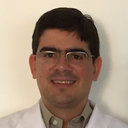Syndecan-1 (CD138) and Ki-67 expression in odontogenic cystic lesions.
Cuvinte cheie
Abstract
The aim of this study was to assess the immunohistochemical expression of syndecan-1 (CD138) and Ki-67 in radicular cysts (RC), dentigerous cysts (DC) and keratocystic odontogenic tumors (KOT). Thirty-five RC, 22 DC and 17 KOT were used in the study and immunohistochemical reactions using anti-syndecan-1 and anti-Ki-67 antibodies were performed by the streptavidin-biotin-peroxidase method. Fisher's exact test and Spearman's correlation coefficient were used for statistical analysis of data. Among the studied lesions, no differences in the syndecan-1 expression were observed, but the suprabasal expression of Ki-67 was significantly higher in KOT (p<0.0001), when compared with RC and DC. In RC, there was positive correlation between the expression (p=0.02) and intensity (p=0.0001) of syndecan-1 and between the intensity of syndecan-1 and Ki-67 expression (p=0.01). In the KOT, Ki-67 expression in the suprabasal layer correlated positively with the expression (p=0.01) and intensity (p=0.01) of syndecan-1. The expression of syndecan-1 does not seem to be a determinant factor of the distinct histopathological features and biological behavior of the studied lesions. Nevertheless, positive correlation between syndecan-1 and a cell proliferation marker was observed in RC and KOT.



